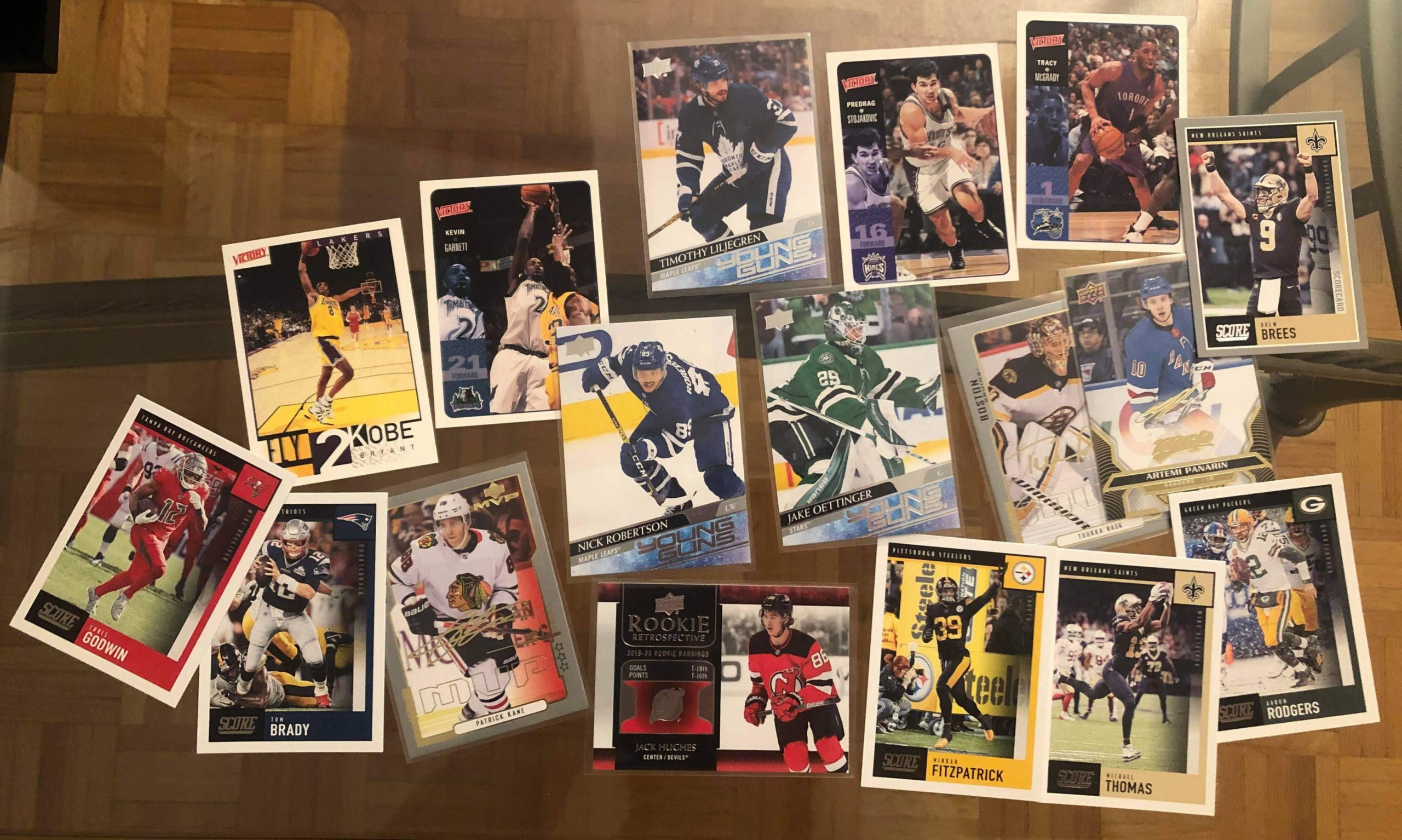Sports cards rise in popularity amidst the pandemic
Collecting sports cards is an old hobby that has seen an unprecedented surge in popularity over the last year. As a result, the trading, buying, and selling of sports cards has never been hotter.
In January, American entrepreneur and Indianapolis-native Rob Gough bought a rare 1952 Mickey Mantle baseball card for a record-setting US $5.2 million. Meanwhile, a limited edition LeBron James basketball card sold for a little over $1.8 million last July.
Trevor Ingram, owner of Sports Card Check-Swing in Brossard, said demand for cards started reaching all-time heights last year.
“In the early stages of the pandemic, I think people were looking for new hobbies to pass the time from home and get their minds off the virus,” Ingram said. “Collecting cards just so happens to lend itself well to confinement and social distancing.”
The most common and affordable method of collecting sports cards is to buy individual packs, in which consumers can expect to get several cards from the base set with a slight chance of pulling exclusive cards called inserts. Cards from the base set are common and guaranteed in every pack whereas inserts are unique cards that are randomly inserted into packs, which makes them considerably harder to acquire.
“Autographed, jersey memorabilia, and rookie inserts are generally worth the most, but it depends on the sport and particular set.” Ingram said.
Retail and hobby boxes offer packs in greater bulk with better odds of pulling a set’s valuable inserts. The former is widely distributed and sold at most retail outlets, while the latter is an alternative that gives avid collectors a certain number of guaranteed hits at a higher cost.
Cards can also be acquired on an individual basis. Nowadays, a desirable card is a point and click away for card gatherers, thanks in large part to the internet, social media, and e-commerce platforms like eBay.
According to Ingram, a fervent card collector himself, the most dedicated people in the hobby will do a little bit of everything. For Ingram, that means generating a personal collection of untouchable cards, which allows him to regularly open packs for the sheer joy and excitement, while simultaneously turning a profit whenever appropriate.
“As a kid, I was addicted to the mystery that comes with opening a fresh box of cards,” Ingram said. “Even though there are better ways to spend money in the hobby with the lopsided pack odds nowadays, the thrill and excitement of opening packs isn’t there when you are buying cards secondhand.”
With the hobby’s resurgence in recent times, Ingram said his valuable sports stock sells out in a matter of hours. He added that due to limited supply and absurd demand, prices for card packs across every major sport have risen by a large margin.
“Now, some boxes are selling for up to five times their original price, and those numbers will keep climbing so long as people are willing to spend,” Ingram said. “Unfortunately, average people who are interested in collecting but don’t want to spend an entire paycheck on cards are being priced out.”
Despite the growing costs of collecting sports cards, Ingram said there are ways to stay engaged without breaking the bank amidst the card market boom.
While most card investors set their sights on the exclusive mint-condition cards, many will bundle their non-graded cards for sale at a modest price. This remains a viable option for those who are looking to open packs with their children or just indulge in the mystery themselves.
“Getting a card professionally graded is costly and usually takes a few months with shipping,” Ingram explained. “Grading significantly boosts the value of cards, but most of the time it’s simply not worth the struggle unless the card is worthwhile.”
Sports Card Check-Swing never put products on reserve for clients in the past — according to Ingram, no one ever asked, and the need was never there.
Today, Ingram said he gets calls daily from clients asking him to put aside products for them; often months ahead of scheduled release dates. He added that if not for an imposed limit on the number of pre-orders he can accept, the local card shop would have nothing to sell on the days of release.
“I’ve been in this business for over 30 years, and this is undoubtedly the biggest sports card boom I’ve ever witnessed,” Ingram said. “Yet, I think the industry is years away from actually reaching its peak.”
Photo by Liam Sharp
